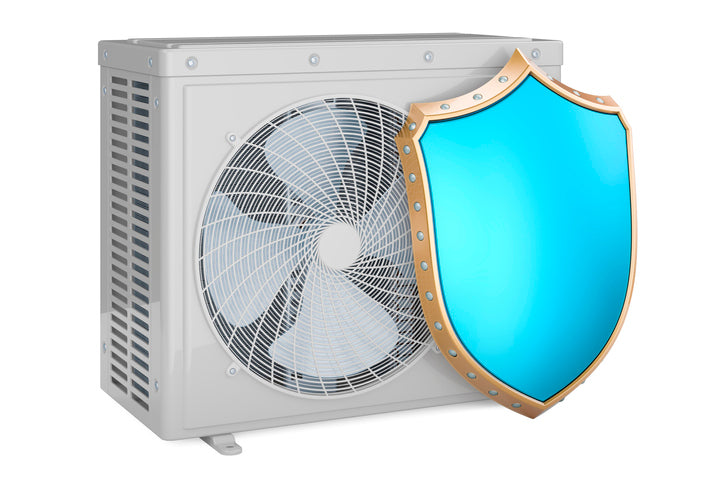What To Consider When Choosing a Home Heating System

As temperatures start to dip, it’s important to think about how you’re going to stay warm during winter. If you would prefer not to spend the coldest months of the year shivering away, a high-quality heating system well-suited to your home is essential. With hundreds of different types of heating systems to choose from, however, it can be hard to know which one is the best option. To help you make an optimally advantageous decision, we have compiled a list on what to consider when choosing a home heating system.
Purchase Price
One of the most important factors to consider when choosing a home heating system is its cost. A new heating system will generally range in cost from as low as $500 up to $10,000 depending on its capabilities, how many units are required, and other pertinent factors. Electric systems are generally less expensive than gas, oil, or geothermal heating systems. Solar energy systems are the most expensive at around $15,000 to $30,000. When searching for a new heating system, it’s important to compare prices to find a system that fits within your budget.
Installation Cost and Difficulty
In addition to the purchase price, it’s also important to consider the cost of installation when determining which type of unit is best suited to your budget.
Unless your home already has a ducted heating system, the process of installing ductwork can be highly expensive, invasive, and time-consuming. Depending on the size and design of one’s home, installing new ductwork in existing walls can cost between $3,000 and $10,000. On top of that, homeowners will have to pay for the heating system’s installation, which can cost an extra $2,500 to $7,000.
If you’re looking for a more budget-friendly option, you may want to consider opting for a ductless heating system. Ductless mini-split systems, for example, are easy to install and only require making a three-inch hole in the wall. As such, installation costs are much less expensive. Most professional companies have installation rates of around $300 to $2,500 depending on how many indoor and outdoor units are being installed. To save even more money, handier home owners may even be able to install their system all on their own. When you purchase a mini-split unit from the Pioneer Mini Split Store, you’ll also receive a full installation kit to make the process as simple and easy as possible.
Energy Efficiency
Another cost-related consideration is the unit’s energy efficiency. Temperature control systems are the largest consumers of energy in a home. As such, the energy efficiency of the heating system you choose can have a large impact on your monthly energy bill. To keep operating costs low, it’s important to choose a heating system that has a favorable SEER rating.
SEER stands for seasonal energy efficiency ratio. The ratio divides the average heating output of a heating system by the average amount of energy the unit consumes in terms of Watts per hour over the duration of a cooling season.
The majority of heating systems have a SEER rating of around 13 to 23. The higher the SEER rating, the more energy efficient it is and the lower your energy bill will be. Plus, purchasing a system with a high SEER rating will help reduce your carbon footprint which is a nice bonus for environmentally-conscious homeowners.
Aesthetics
The aesthetic appearance of the heating system is also an important consideration for many homeowners. If you’re looking for an unobtrusive system that won’t take up any space in your home, you may want to opt for a ducted system. Aside from a few small vents, ducted systems are virtually unnoticeable.
Ductless systems such as mini-splits or window units, however, are more visible. Instead of being installed behind a wall, they’re out in the open. That being said, there are a wide variety of sleek mini-split systems much more aesthetically pleasing than bulky window units.
If you choose to install a mini-split heating system in your home, there are many different configurations to choose from which can impact your home’s appearance. For a more inconspicuous mini-split system, you may want to choose a ceiling-mount mini-split configuration that mounts into the recesses of the ceiling. As a result, only a decorative air exchange panel is visible.
BTU Rating
In addition to the SEER rating, another important acronym to pay attention to when choosing a heating system for your home is the BTU rating. BTU stands for British Thermal Unit and refers to the amount of energy needed to raise the temperature of one pound of water by 1° Fahrenheit. Despite its name, BTU isn’t just used in the UK. It has become a popular measurement for heating systems in the US as well.
This rating will help provide you with an idea of how powerful the heating system is and how much energy it can provide. Unlike the SEER rating, a higher BTU isn’t always better. Choosing a BTU that’s too high will likely waste energy and cause the system to cycle on and off too quickly which will put strain on the system and result in noisy operation. If the BTU is too small, however, the heating system won’t have enough power to effectively warm your space. When determining the correct BTU for your home, consider a variety of factors such as the size of your home, its ceiling height, how well it is insulated, and its location.
Pioneer Mini Split Store Systems
The Pioneer Mini Split store is a leading provider of ducted and ductless mini-split heating systems. We offer an extensive array of systems with varying configurations and BTU ratings to suit your unique preferences and needs. From ceiling cassette styles to floor-mounted systems, you can find them all here. Plus, our systems are simple to install and come with a full installation kit in one convenient package. To learn more about our energy-efficient, competitively-priced systems, contact the Pioneer Mini Split Store today.








